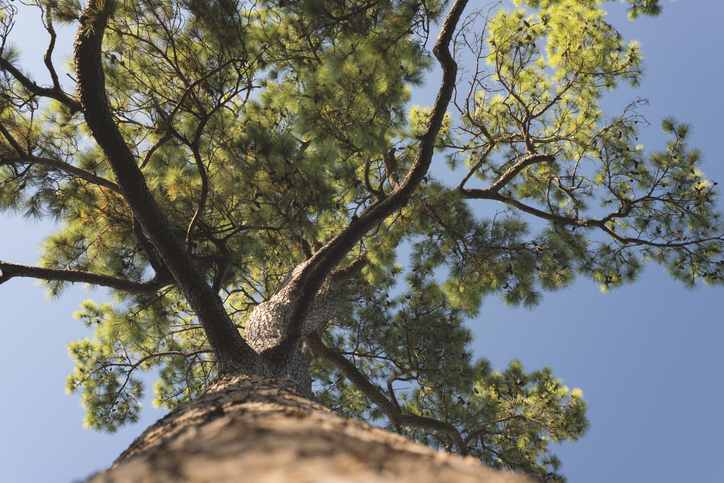Types of Pine Trees
Below are types of pine trees planted for reforestation purposes in Mississippi.
Loblolly Pine

| Botanical Name | Pinus taeda |
| Other Names | Old-field pine, North Carolina pine |
| Description | Generally 80 to 100 feet tall with a 24-inch diameter. A large, resinous, fragrant tree with a rounded crown of spreading branches. Usually has a tall, straight trunk free of branches on the lower portion of the tree. |
| Habitat | From deep, poorly drained floodplains to well-drained slopes of rolling, hilly, uplands. Forms pure stands, often on abandoned farmland. |
| Range | Southern New Jersey south to central Florida, west to east Texas, north to extreme southeast Oklahoma. |
| Usages | Timber Loblolly is considered the principal commercial pine species of the southeastern states because of its wide range, abundance, and adaptability to a variety of sites. Among the fastest-growing southern pines, it is extensively cultivated in forest plantations for pulpwood and lumber. Wildlife Birds and small mammals eat the seed. This species provides habitat for bobwhite quail, white-tail deer, wild turkey, and squirrel. Old-growth stands provide nesting habitat for the red-cockaded woodpecker. |
| General Comments | Loblolly pine is native in 15 southeastern states. |
Longleaf Pine

| Botanical Name | Pinus palustris |
| Other Names | Longleaf yellow pine, southern yellow pine |
| Description | Generally 80 to 100 feet tall with a 24-inch diameter. Large tree with the longest needles and largest cones of any eastern pine with an open, irregular crown of few spreading branches; 1 row added each year. |
| Habitat | Well-drained sandy soils of flatlands and sandhills; often in pure stands. |
| Range | Found in the Atlantic and Gulf Coastal Plains from southeastern Virginia to central Florida and west to eastern Texas, and in the Piedmont region and Valley and Ridge province of Georgia and Alabama. |
| Usages | Timber The wood is clear, straight with few defects, and used for timber and shipbuilding. Wildlife Birds and small mammals eat the large seeds. This species provides excellent habitat for bobwhite quail, white-tailed deer, wild turkey, and squirrel. Old-growth stands provide nesting habitat for the red-cockaded woodpecker. Erosion Control Highly recommended species for reforestation of dry, infertile, deep sand in the southern U.S. |
General Comments | Longleaf is used, along with slash pine, for commercial production of naval stores. Resin is used in the naval stores industry for gum turpentine and rosin production. |
Slash Pine

| Botanical Name | Pinus elliottii |
| Other Names | Yellow slash pine, swamp pine |
| Description | Generally 60 to 100 feet tall with a 24-inch diameter. Large tree with a narrow, regular, pointed crown of horizontal branches and long needles. |
| Habitat | Grows in low areas such as pond margins, upland and old fields, flatwoods, and swamps, including poorly drained sandy soils. |
| Range | Coastal plains from southern South Carolina to south Florida, and west to southwest Louisiana. |
| Usages | Timber Its wood is used for pulp, poles, piling, crossties, lumber, crates, boxes, and turpentine. Wildlife The pine seeds of slash pine are an excellent food source for gray and fox squirrels and wild turkey. Beautifications Its beauty makes it popular as a shade and ornamental tree. |
| General Comments | One of the fastest-growing southern pines. Use for naval stores in the past. |
The information above comes from the National Audubon Society Field Guide to North America Trees, Eastern Region and/or the NRCS Plant Fact Sheet or Plant Guides.
